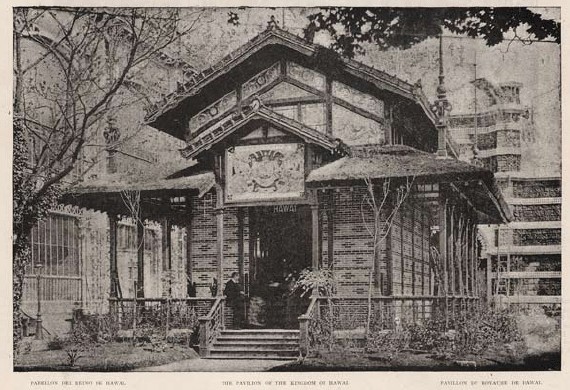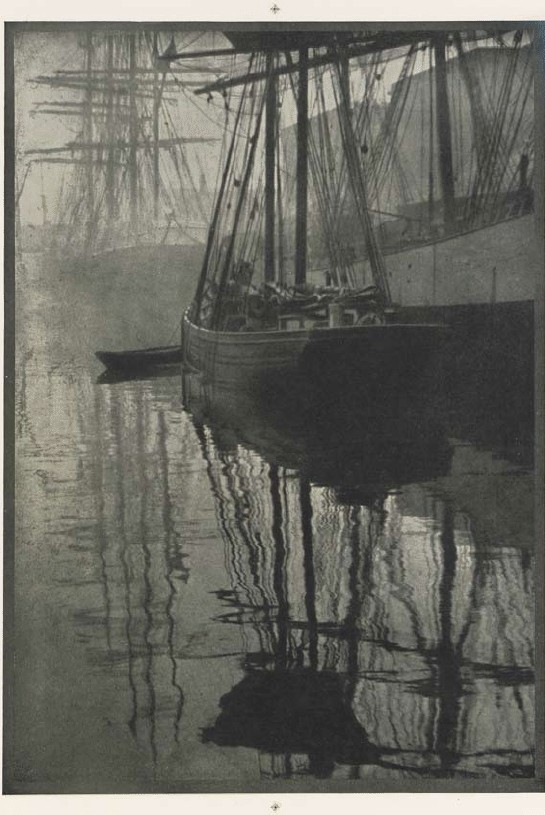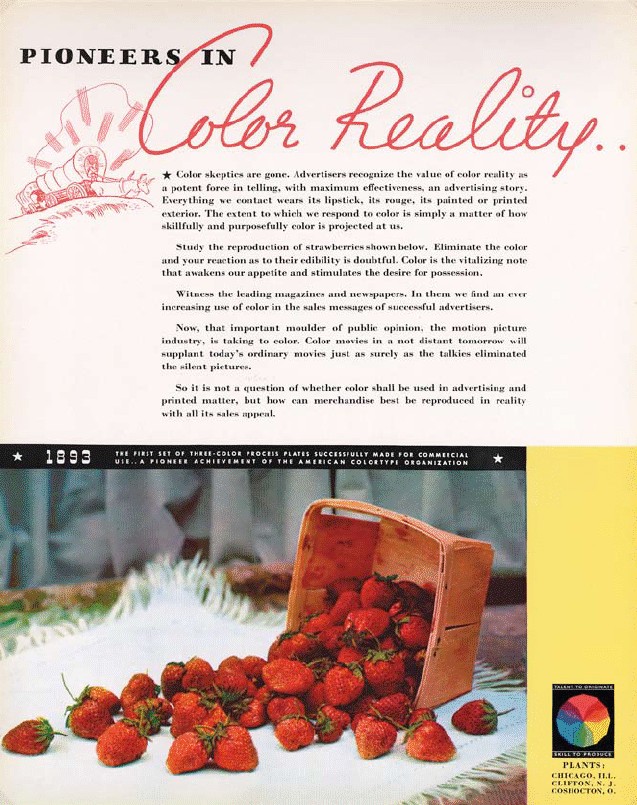- Relief printing
- Intaglio and planographic printing
- Color printing
- Bits and pieces
- Early photography in silver
- Non-silver processes
- Modern photography
- Color notes
- Color photography
- Photography in ink: relief and intaglio printing
- Photography in ink: planographic printing
- Digital processes
- Where do we go from here?
Halftone

Wood engraving and halftone print. Photographer unknown. The Pavilions of the Paris Exhibition. 1889. 15 x 10" (38.1 x 25.4 cm). The Museum of Modern Art, New York. Gift of Richard Benson.
The plain one-impression halftone, printed by letterpress, completely dominated mass-produced photographic publications from about 1900 until the refinement of photo offset lithography in the 1960s. The halftone was cheap, easy to make and print, lent itself to the production of stereotypes (which allowed both type and pictures to be printed on rotary presses), and gave a passable level of quality for most uses.

Halftone duotone print. Alvin Langdon Coburn. The Spider’s Web. c. 1905. 10¼ x 7 in. (26 x 17.8 cm). An untrimmed proof sheet for a plate in Camera Work 21 (January 1908).
A surprising thing about this technique is that it changed so little between its invention and its demise. Extremely beautiful photographic reproductions were already being made in the first half of the century by the technique of photogravure, but this intaglio medium was very expensive. The multiple-pass duotone, though more expensive than a halftone, was still far cheaper than gravure, so it had a viable role in photographic ink printing. The presses never really registered the sheets accurately when printing duotones, but the second impression, being gray, could be a bit out of alignment and still improve the reproduction. Perfect registration had to wait for the multicolor offset presses designed to print color for advertising purposes.

Process-color halftone print. Photographer unknown. Pioneers in Color Reality. 1936. 13¾ x 11 in. (34.9 x 28 cm). From the trade magazine Advertising Agency, September, 1936.
By the 1940s color halftones were making their mark in magazines and books, printed by a method called “process color,” which was becoming firmly established. A key element in the spread of color was the construction of multiunit printing presses that could lay down all four process colors—the subtractive primaries of cyan, magenta, and yellow, plus black—in one pass. The history of color photography in ink teaches us much about our society. The color reproductions printed with letterpress were never very good, but color had such commercial power that all printing technologies ultimately became color mediums.

